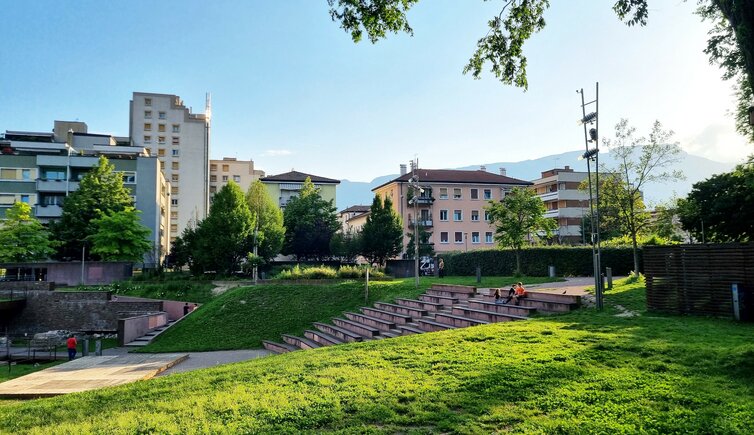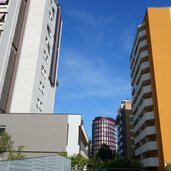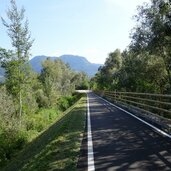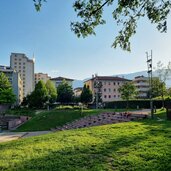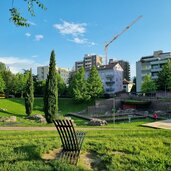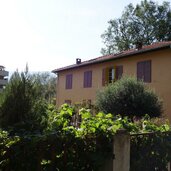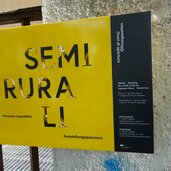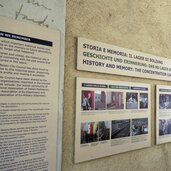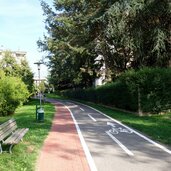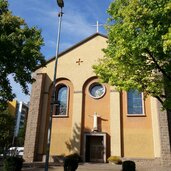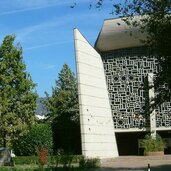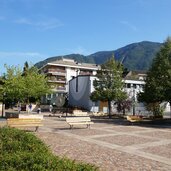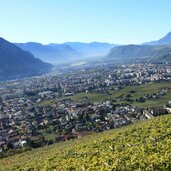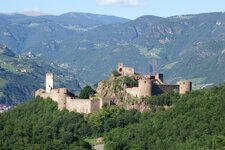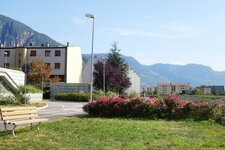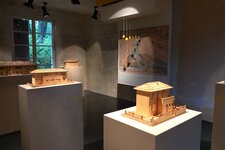Bolzano’s Don Bosco district features the Semirurali Park, perfect for picnics and for summer concerts
Image gallery: Bolzano Don Bosco
One of Bolzano's cycle paths follows the Isarco River, leading you directly to the Semirurali Park. It’s the heart of Don Bosco, one of Bolzano's most culturally diverse districts. During the summer, the park hosts cultural evenings and open-air concerts. It also boasts a 300-seat amphitheatre and a small archaeological site revealing the remains of the medieval church and Santa Maria in Augia Monastery. Just across the river, a little further east, you'll find Twenty, South Tyrol's largest shopping centre, complete with a cinema and restaurants.
Don Bosco stretches from the central Viale Druso road in the north to the Santa Maria in Augia Church in the south, and from the Europa-Novacella district in the east to the border of Appiano on the Wine Road in the west. Where Firmiano Castle overlooks the entrance to the MeBo motorway, new residential areas like Firmiano and Casanova have replaced the former orchards.
Just 100 years ago, fruit trees dominated the landscape, and the houses looked quite different. To encourage the migration of workers from other Italian regions, hundreds of simple houses with vegetable gardens, known as Case Semirurali (literally: semi-rural houses), were built in this outlying district in the late 1930s. As Don Bosco grew, these Case Semirurali were gradually demolished and replaced by modern residential complexes.
Today, Bolzano holds the "ClimateMunicipality Gold" award. One Semi-Rural House, however, has been preserved as house museum. It documents the development of the district and provides an authentic glimpse into what life was like in these houses. A short walk away is the Passage of Remembrance, a memorial to the Bolzano Nazi transit camp, which operated from 1944 to 1945.
